Archaia Olympia & Stemnitsa 🇬🇷
I am in two minds about writing this as a single post; a visit the site of the ancient Olympic games over 2500 years ago, and a truly incredible hike between two villages in the Peloponnese mountains. To think that everything I have seen on this trip to Greece is in one region of the mainland is incredible.
I beg of you to take the time to at least glance at both sections of this post. As someone not well versed in history I was overwhelmed by the site of the ancient Olympic games, and as a fairly amateur hiker I was amazed by the beauty and natural diversity of the hike between the mountainous villages of Stemnitsa and Dimitsana. I am certain that either one of these sections will inspire you to one day take a trip to the Peloponnese region of mainland Greece.
Archaia Olympia
The main town of Archaia Olympia is fairly touristy, but by no means in an unpleasant way. There are shops with postcards and fridge magnets, and even a pizza restaurant. But they also have something that makes this town historically incredible, the archaeological ruins of the site of the original Olympic games from over 2500 years ago.
In this post I can’t possibly give a full account of what went on at the Olympic games, the history is just so detailed and spans nearly 1200 years of games! The best I can hope to do is give a flavour of the original games and encourage you to embark on a journey to visit this town and take in its history.
There are actually three sites to visit in the area and all are covered under one €12 ticket. They are:
- The Museum of the History of the Olympic Games of antiquity
- The Archaeological Site of Olympia (the physical archaeological remains)
- Archaeological Museum of Olympia
My first stop was the museum of the history of the games, and this is the ideal place to start as it really helps to understand what went on at the games before seeing the physical site.
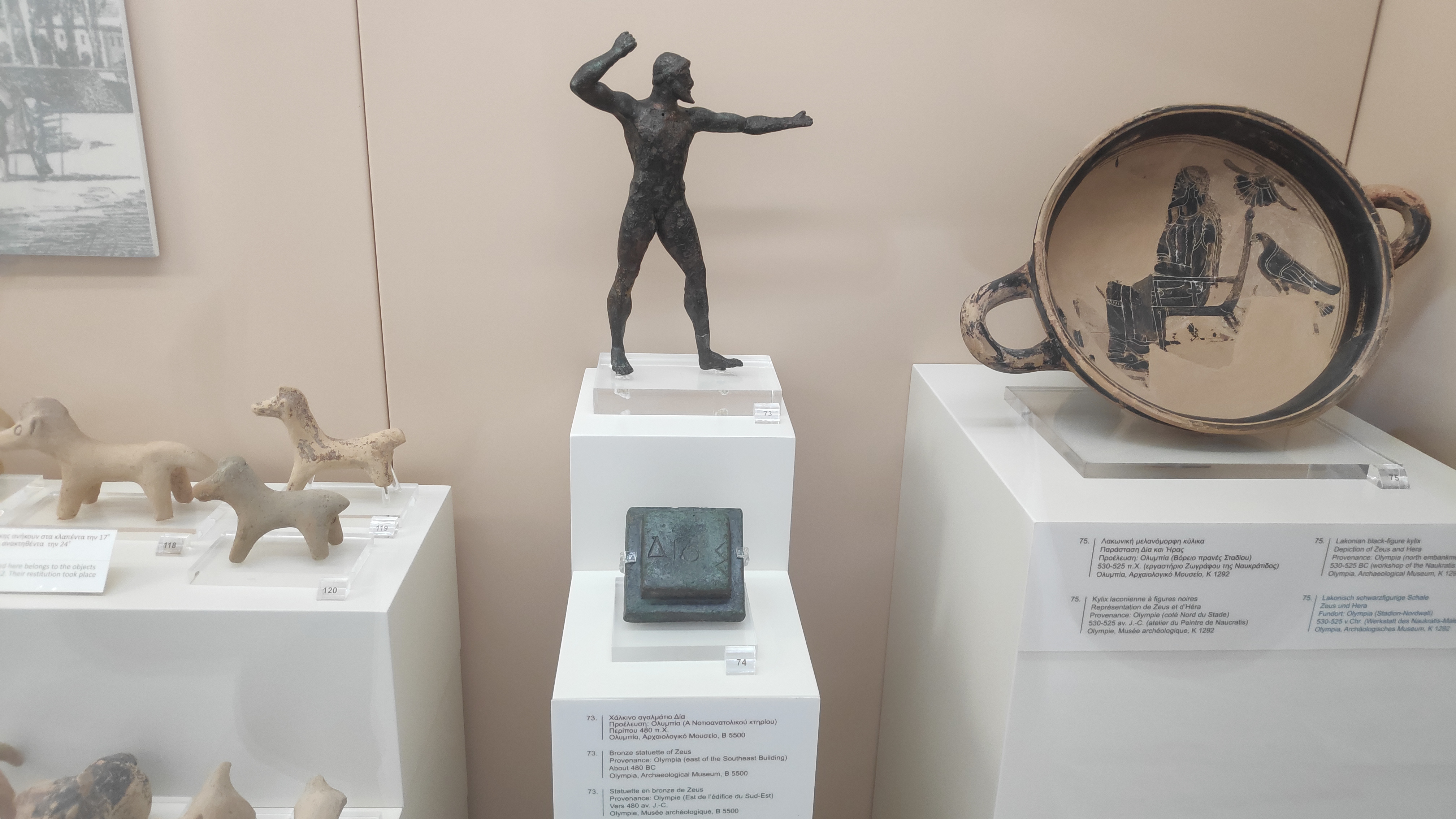
The museum is full of well-preserved articles found from the site
There are hundreds of, figurines, bronze works, statues, and stone works that were retrieved from the site and given the age of these items it is incredible just how well-preserved everything is. I could not believe I was looking at items in some cases made over 2500 years ago. The information available at the museum is also extensive.
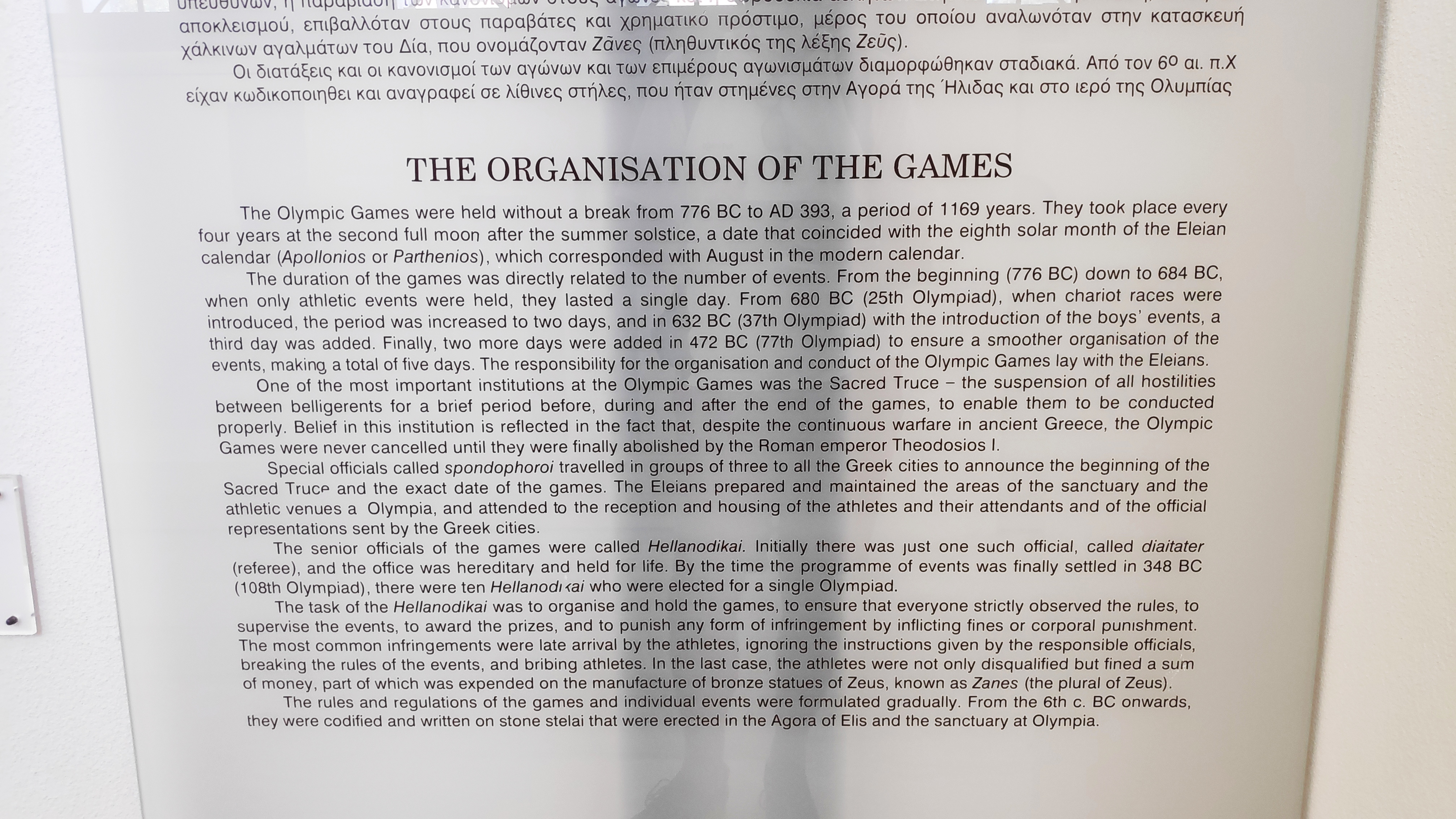
The information plaques at the museum are the perfect precursor to the visit to the archeological site
The games lasted an incredible 1169 years before finally being abolished in 393 AD by Roman Emperor Theodosius I. The athletes needed to be Greek, and born a free citizens to parents who were also free citizens. The games could be attended by almost everyone, barbarians, slaves, rich, poor, but women were forbidden from attending the games. One notable exception was made: Kallipateira, daughter of Olympic champion Diagoras secretly went to see the games to see her son Peisirodos compete in the boxing. Out of respect for the athletic history of her family she was spared punishment.
After reading all this impressive history I was expecting to only be able to see such a historic archaeological site from quite a distance. I was therefore quite surprised to learn that you can walk almost through the remains themselves!
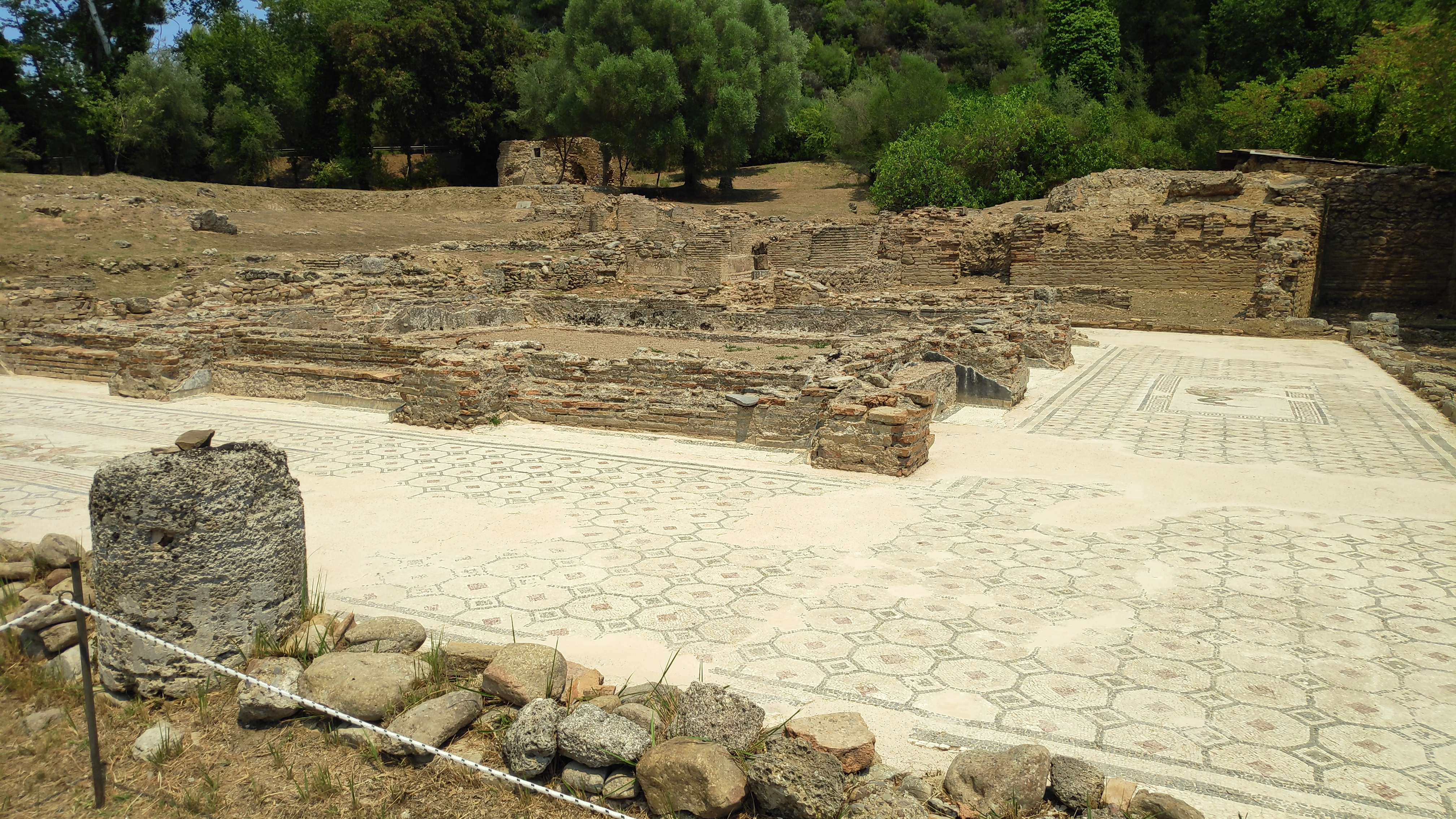
Kronion Thermae, a building of many functions over the years of the games
You can walk round the entire site comfortably in an hour. The remains of each building have a really nice description of what the building was and its function. For me the walkway that leads to the main running track is the most prominent remaining feature, as it’s quite magical to imagine walking down that tunnel to 40000 people waiting to watch the games.
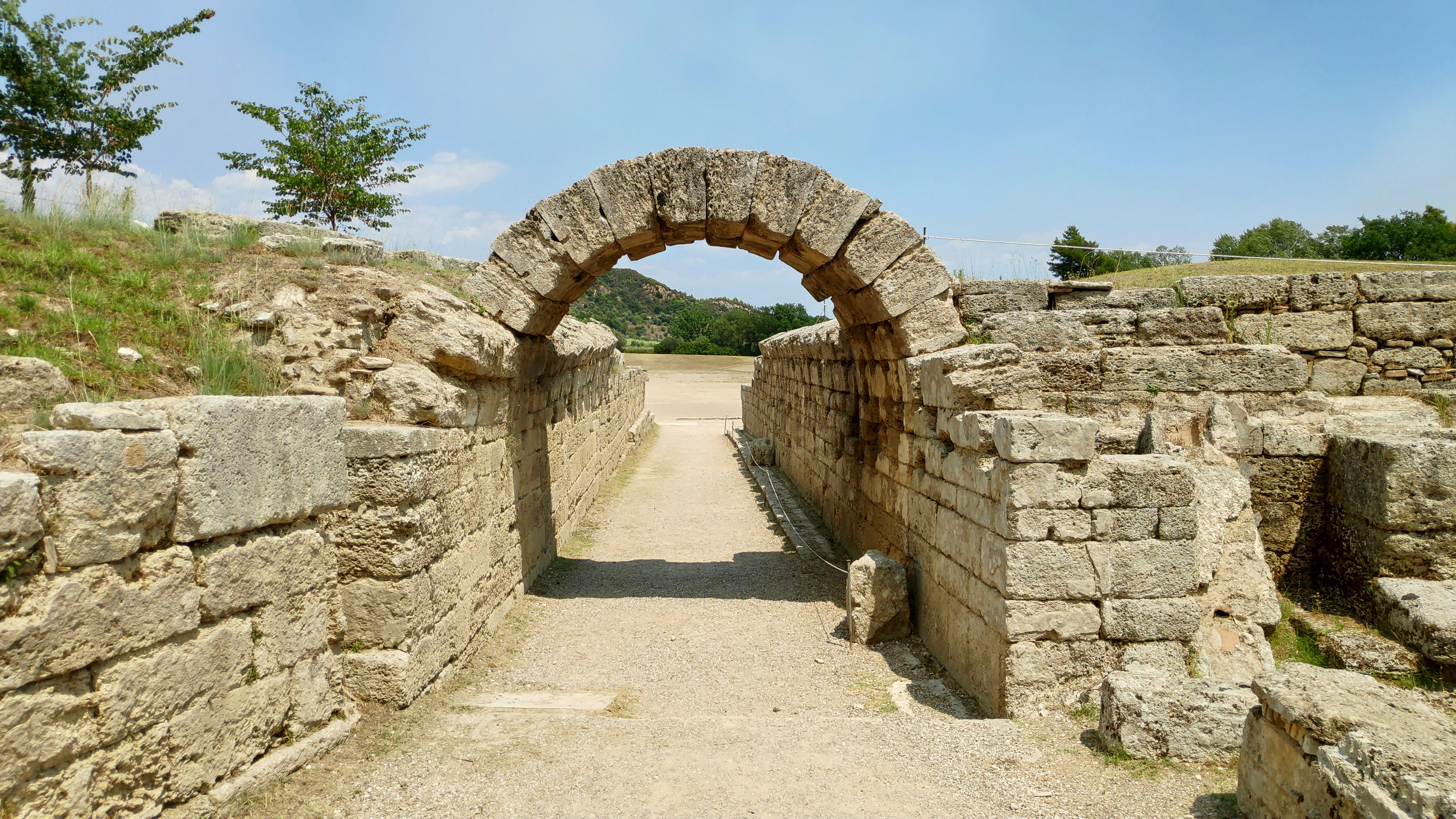
The walkway to the main venue for the games
And in fact you can do exactly that, walk through that tunnel and you end up at the main track where people sat over 2000 years ago to watch the games.
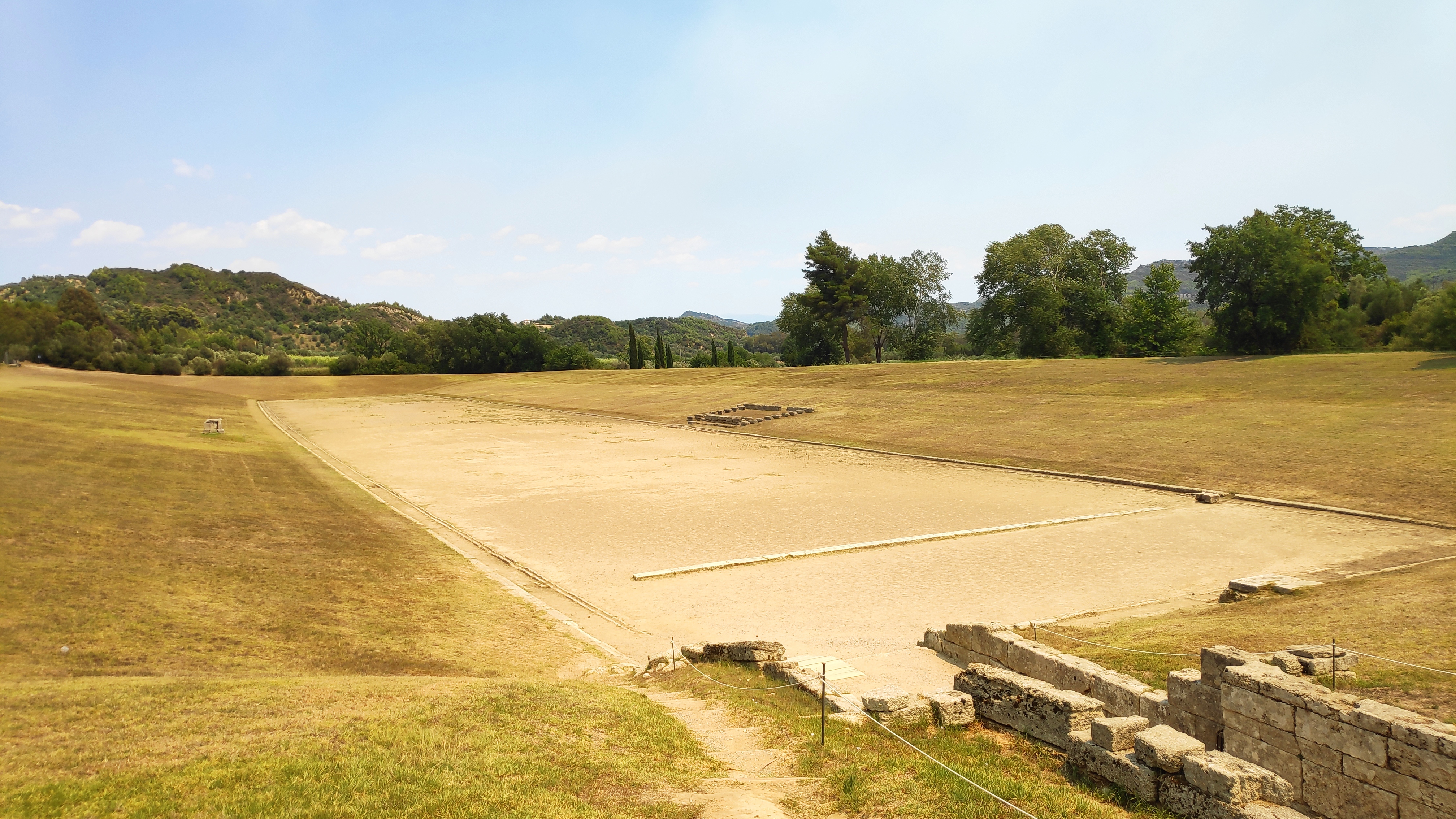
The main venue for the games, the running track
There are remains of many buildings around the site, the Temple of Hera where the modern Olympic torch is lit, the Temple of Zeus, Octagon (a villa for Roman emperor Nero), as well as a meeting and socialising point for the athletes.
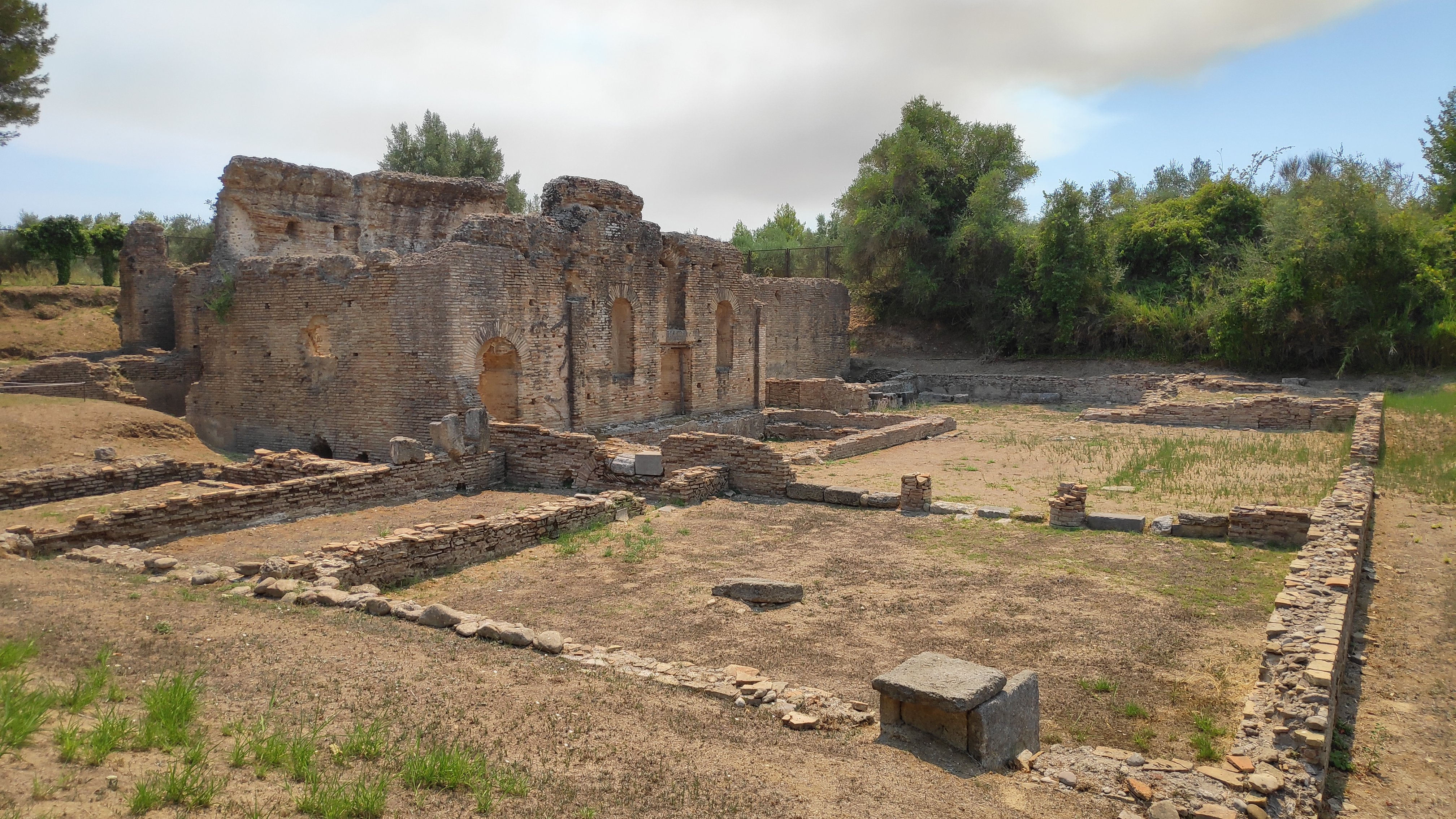
A meeting point for the athletes with an outdoor pool
Finally after walking through the archaeological remains I headed to the Archaeological Museum of Olympia. This is the newer of the two museums and contains further artifacts recovered from the archaeological site. This museum focuses less on the history of the games, but still includes a large number of interesting figurines and statues.
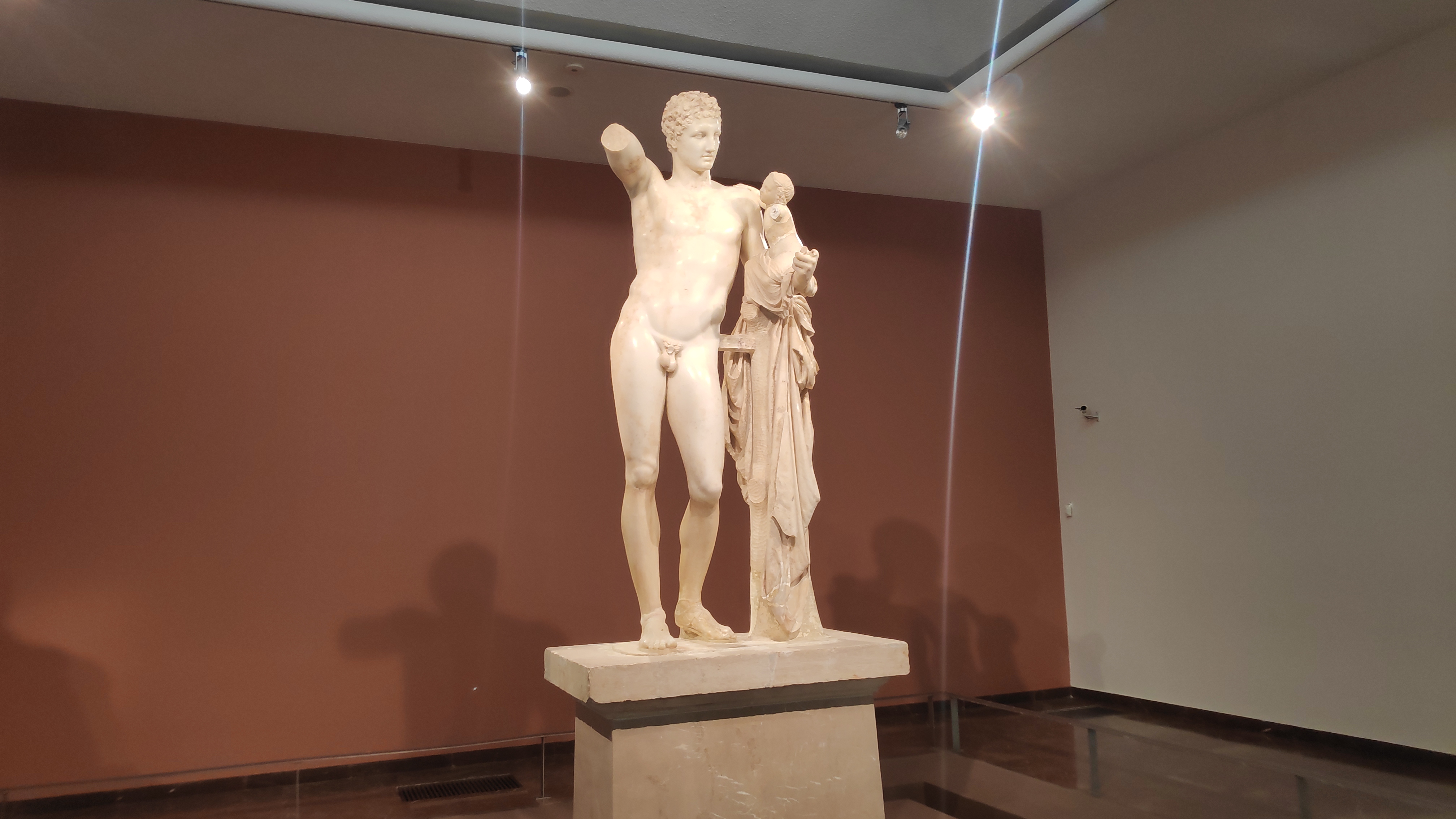
Hermes of Praxiteles, found in the Temple of Hera
My visit to Archaia Olympia all took place on the day I was leaving there, all in all only around 5 hours. I then took of in the direction of Stemnitsa to tackle the first section of the Menalon Trail.
Stemnitsa & Dimitsana
The journey to Stemnitsa involves a scenic drive through the mountains with plenty of winding roads. On my arrival I checked into Tsarbou Guesthouse. The guesthouse is lovely, comfortable and, as is the case with most Greek establishments, run by a lovely lady called Christina who couldn’t do enough to help me. Her breakfasts were especially fantastic, and used ingredients from her and her husband’s farm.
A 5 minute walk through the town up through a small path gets you to Stemnitsa Castle which has a great view over the mountains as well as the village of Stemnitsa itself.

Stemnitsa as seen from Stemnitsa Castle
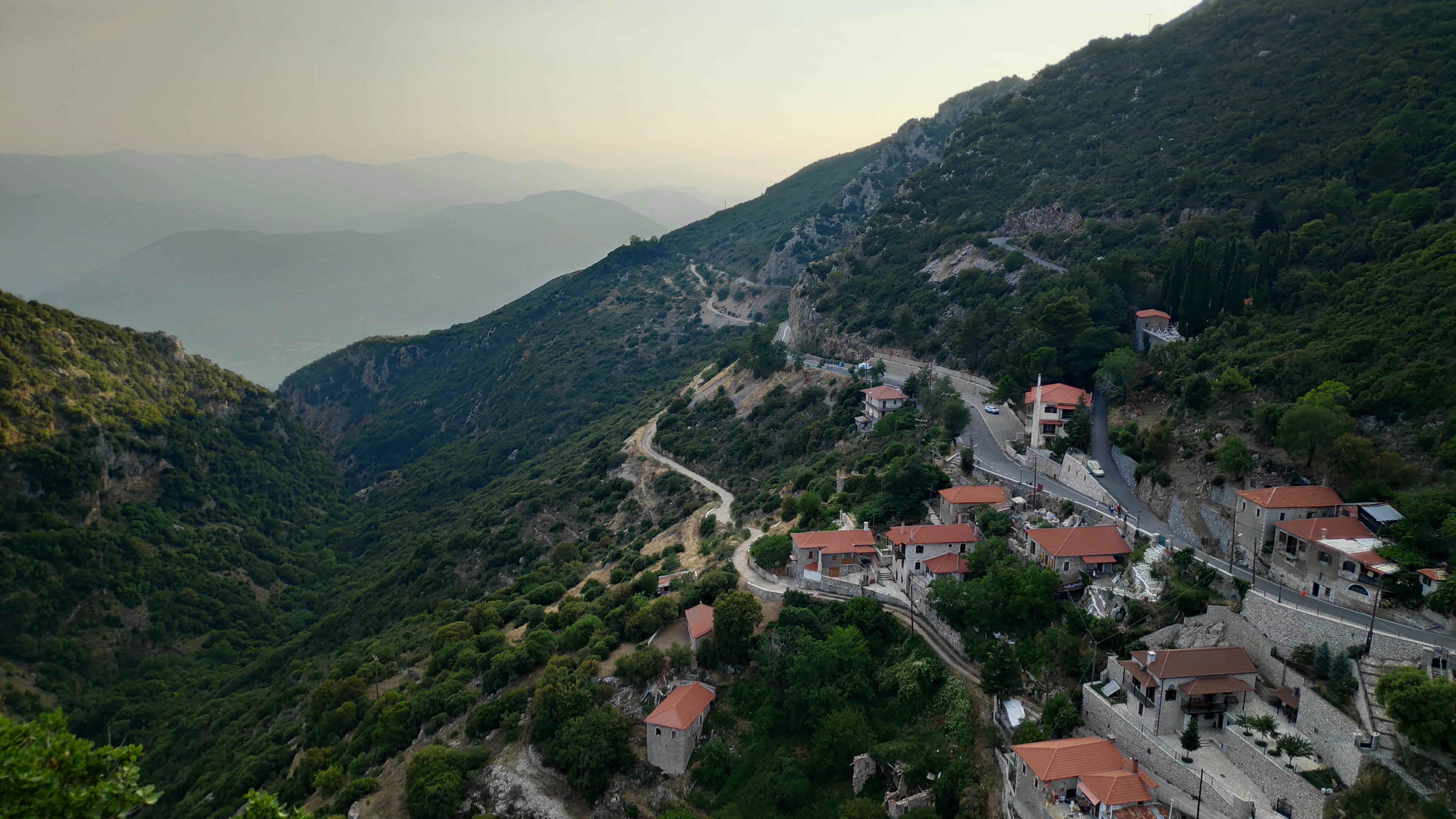
Stemnitsa as seen from Stemnitsa Castle
After a fairly relaxed evening I woke up the next day ready to tackle the first section of The Menalon Trail. The whole trail consists of 8 sections and 75km. The first section is the 3rd longest at 12.5km and takes you down a long descent into the valley before emerging up to the village of Dimitsana. Somehow due to small deviations and probably some GPS noise I managed to get 16.5km recorded on Strava for my hike.
The trail starts from the bell tower at Stemnitsa and immediately it is clear that there is quite a descent.
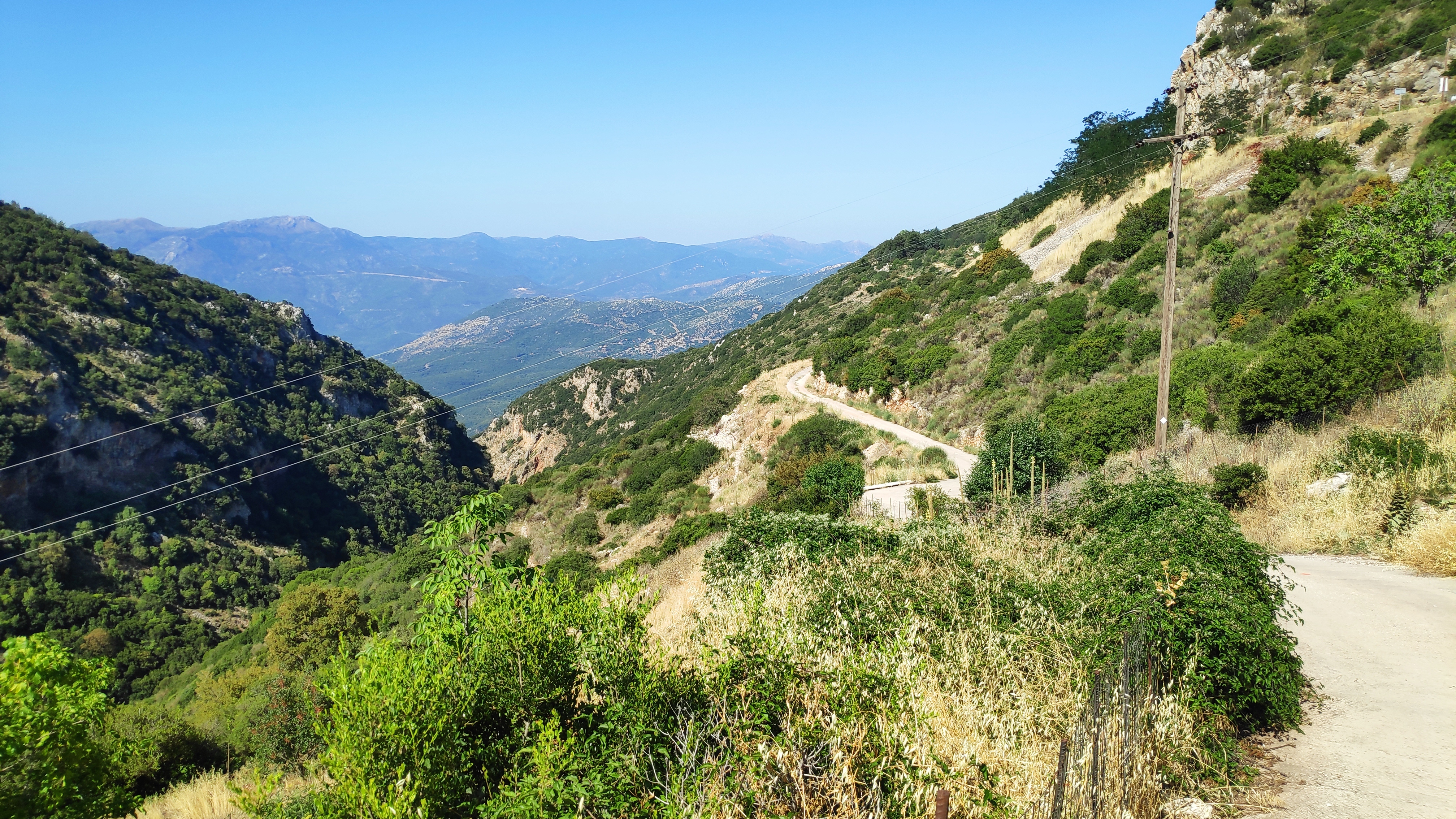
The start of the Menalon Trail
It took around 2 hours in total to descend into the valley. The route is very well signposted, and at regular intervals there are orange dots painted on rocks to ensure you are still on the trail. I am notorious for losing a trail and even I found it quite easy to follow this one.

Me as I descend into the valley
At some point during the descent I reached a little monastery known as “The transformation of God” (when translated from Greek). Although the building isn’t so special in itself, the view from the platform is quite daunting. From the platform you can see quite a drop down to the valley below, the floor of which is obscured by trees.
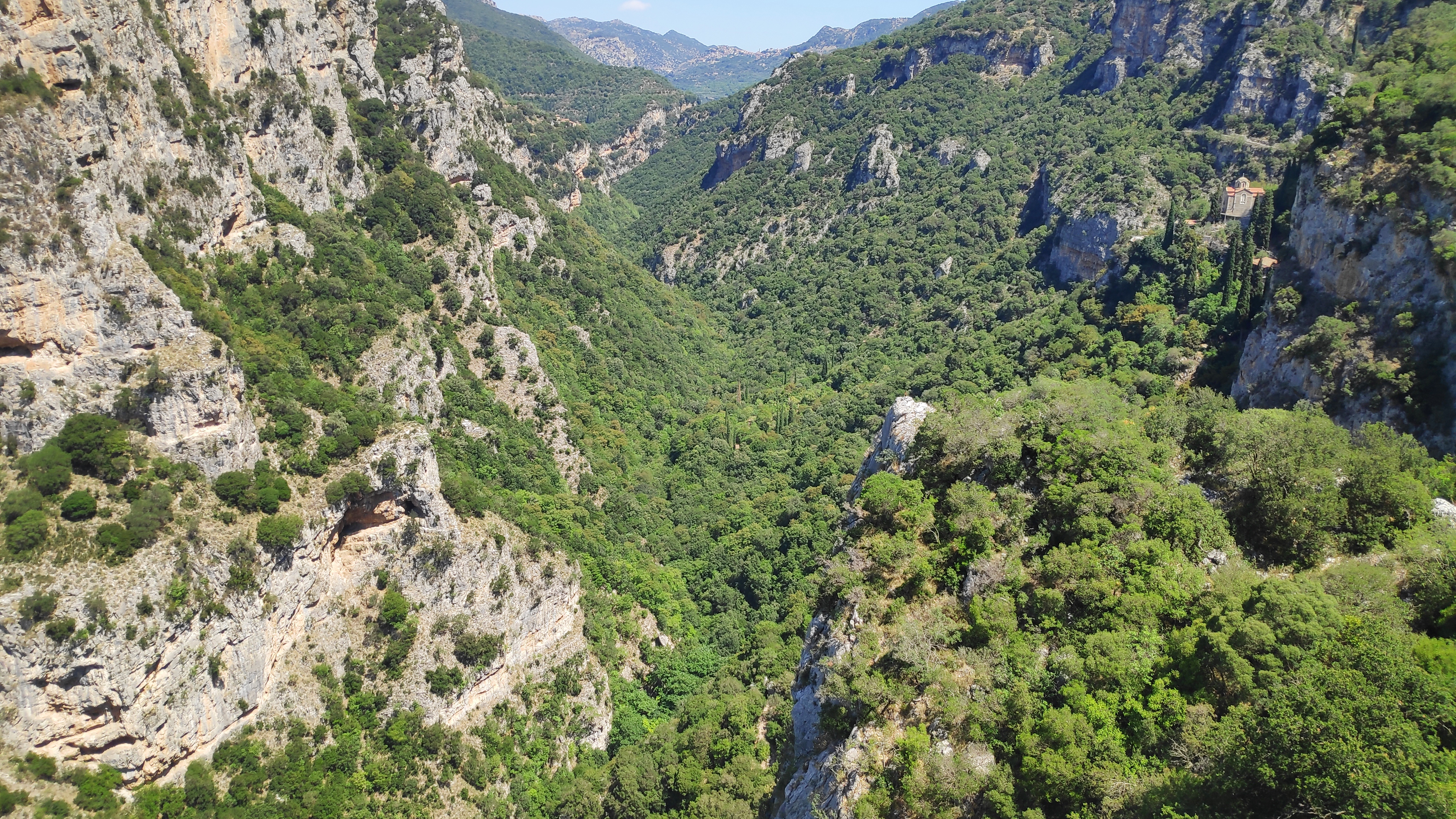
A view looking a long way down into the valley from “The transformation of God”
Continuing further down I eventually reached the lowest point of elevation on my hike when crossing a bridge over the river. It was almost teasing as there is an impressive waterfall with some beautiful blue water pooling below, but absolutely no way to reach it. It would have been a much welcomed refreshing swim.

Looking down into the river below at the point of lowest elevation on the hike
The trail then continues for quite a long time uphill, passing through a mixture of woods, gravel paths, and sections of road. Early on in the uphill is another monastery, this is an excellent place to take on water if needed. It’s also a great place to meet a lot of cats!

The many cats of Moni Panagias Filosofou
Another small treat on the uphill is a stream of water that runs down the stairs leading upwards. It’s almost impossible to not get your feet wet so I took the time to just sit down and cool off with the water follow over my feet.
After yet more uphill the end was in sight. Just before reaching Dimitsana the route took me past the Open air water power museum, a small museum that shows the historic use of water power in the area including for making gunpowder.
After a rather tired museum visit I push on for the end, but not before spotting an unused football pitch. I took a seat in the dugout and sent my drone to inspect Dimitsana, the end of the trail!
Upon reaching the village I bought a drink, sat down, and then took a taxi back to Stemnitsa. 5 hours of hiking was undone by 10 minutes of driving, but I was delighted to be back to a comfortable bed and a nice shower.
